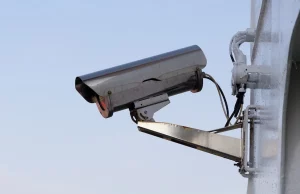Can you work with a tourist visa in the USA? The American government issues many tourist visas each month. Breaking the rules of your tourist visa, like staying in the United States longer than allowed, can lead to serious immigration problems.
It’s not a good idea to come to the U.S. on a tourist visa, hoping to get a job and stay here. If you do that, immigration authorities could say you’re misusing the tourist visa and refuse any future immigration requests.
But, in some rare cases, a tourist who came to the U.S. might be able to switch to a work visa if a U.S. employer sponsors them. In this article, we will cover all you require to know about working in the United States as a tourist.
Can You Work With A Tourist Visa In The USA?
A tourist visa allows temporary United States visits for leisure and business purposes. It has a multiple-entry option, so you can go to the United States multiple times without needing to reapply. Each visit on a U.S. tourist visa can last at least six months.
In the United States, if you’re on a tourist visa, you can’t work or look for work. This visa doesn’t allow you to take up any job, whether volunteer, full-time, or part-time. If you’re interested in working here, you’ll need to apply for a work visa. Depending on the type of work you want, different visa options are available.
Suppose you land a job while on a tourist visa in the United States; your employer can then request a change in your visa status before your tourist visa runs out. Following visa laws is crucial because overstaying in the United States can have severe consequences. Violating these laws could lead to being banned from entering the U.S. for many years.
Overview of B Visa
You may know somebody with a B visa. It is the most common U.S. visa and lets non-citizens stay in the United States for up to six months.
There are two types of B visas: B-1 for business visits and B-2 for tourists. B-1 visitors usually come to the United States for business events and conferences, meetings with clients or investors, or doing market research. B-2 visitors have different reasons, like visiting family or friends, exploring the country, or getting medical care.
Even though B-1 and B-2 visas are provided for different reasons, they’re almost the same regarding immigration rules, applications, processing times, and charges.
The Visa Waiver Program, or ESTA, is a popular option instead of getting a B visa. It’s open to people from 38 countries. Traveling to the United States with the ESTA is more straightforward than getting a B visa. However, ESTA only allows you to stay for three months, while B visas allow you to stay up to six months.
What Does an “Overstay” Mean?
In most immigration situations, overstaying means staying in the United States after the date on your Form I-94 Arrival or Departure record has passed. Before April 2013, when a foreign national entered the U.S., a CBP (Customs and Border Protection) officer would give them an I-94 card stamped with an expiration date for their B-1 or B-2 visa status.
Nowadays, most nonimmigrant visa holders must get this document from the CBP website. For instance, let’s say you’re a citizen of Russia. You arrive in the U.S. on January 3, 2023, with a multiple-entry B-1 visa still valid for many years.
When you reach the port of entry, a Customs and Border Protection officer will produce a Form I-94 for you in their database. This form says your B-2 visa is valid until June 3, 2023. You are required to leave the United States by that date unless you obtain a visa extension. If you stay beyond that date, you’ll likely start accruing unlawful presence.
How Do You Prevent Overstaying in the United States?
To avoid overstaying your allowed time in the United States, you have a few options. You can leave before your status runs out, request to extend your status, or apply to modify your immigration status, aiming to get a U.S. work visa while your current status is still valid.
Since you can’t work in the United States on a B-1 or B-2 visa, you will need to switch to a visa that lets you work in the U.S. If you get a job offer while visiting the United States on a tourist visa, you can apply to change your status from tourist to work visa. This request for status change goes to the U.S. Citizenship and Immigration Services (USCIS).
Remember to send in your application to modify your status before your tourist visa expires. When you apply to change your status, you’re seen as keeping lawful status while waiting for a decision from USCIS, even if your B-1 or B-2 status ends after that. However, there is a lot you’ll have to do before you can request USCIS to change your status for work.
Can You Change Your Tourist Visa to Work Visa in the US?
Changing a tourist visa to a U.S. work visa is possible, but achieving this goal needs a solid plan. Eventually, every situation is different, so you’ll need the right strategy to switch from one visa status to another. USCIS provides different work visa choices based on your qualifications, skills, education, and other elements.
Most work visas need a job offer from an employer in the United States. Sometimes, you can apply for a waiver of this requirement, but it depends on whether it’s in the US’s best interest to waive it. You can also apply for temporary employment-based visas. Some examples of visas in this category are:
- H-1B visa (Fashion Models and Specialty Occupations)
- H-2A visa (Agricultural Laborers)
- H-2B visa (Non-Agricultural Laborers)
- E-3 visa (Specific Specialty Occupation Experts from Australia)
- O-1 visa (People with Extraordinary Achievement or Ability)
- L-1A visa (Intracompany Transferee Manager or Executive)
- L-1B visa (Intracompany Transferee Specialty Knowledge)
This list doesn’t cover everything. USCIS has many options for foreign nationals based on their skills, education, and other aspects. It’s wise to consult with a professional immigration attorney for a personalized assessment and to find the best path forward.
How Can You Obtain a U.S. Work Visa?
You might be eligible for various work visa types, depending on your skills, immigration situation, and if you’re lucky enough to find a U.S. employer keen to sponsor you.
Numerous foreign workers apply for the H-1B visa, which allows them to work temporarily for a U.S. employer in a specialized field. To get an H-1B, your employer has to file an I-129 petition with U.S. Citizenship and Immigration Services. This petition states that you’re already in the United States on a B-1 or B-2 visa and asks USCIS to do two things.
The first one is to change your visa status to H-1B. The second one is to extend your visa status for a particular time, generally three years, so you can keep working for the employer.
Another work visa option for some individuals is the O-1 visa. It’s for foreign workers with exceptional talents who want to work temporarily for a U.S. employer. Like the H-1B, your employer needs to file an I-129 petition with U.S. Citizenship and Immigration Services to request a change and extension of your immigration status if you’re applying for an O-1.
You might also be eligible for other work visas. The critical thing to remember is to submit your petition before your B-1 or B-2 visa runs out. If you think you might have a job opportunity, it’s best to speak with a lawyer as soon as possible.
What Happens if Your Tourist Visa Expires and You Are in the U.S. Illegally?
If you stay in the U.S. longer than your visa allows and don’t submit a petition timely with USCIS to adjust your status, you start getting into trouble called “unlawful presence.” But if you apply to extend or change your status before your time is up, you can stay in the U.S. until they decide, even if your original deadline for leaving the country passes.
Having an unlawful presence can lead to serious immigration penalties. If you stay unlawfully for more than six months but less than a year and then leave, you can’t return to the U.S. for three years. And if you stay unlawfully for a year or more and then leave, you cannot return to the U.S. for ten years.
You can get immigration waivers to lift these bans and legally let someone from another country come to the United States. However, these waivers are complex and require a good understanding of the relevant rules and laws.
One of the main issues for people applying for these waivers is that they need to have family in the U.S. who would suffer a lot if they’re not allowed to return.
Conclusion
We hope this article has given you the best answer to the question, “Can you work with a tourist visa in the USA?” You can’t work legally when you visit the USA with a tourist visa. Temporary visitor visas don’t allow you to take up any job while you are in the country.
If you want to work legally, you must apply for a status change through the USCIS (United States Citizenship and Immigration Services). If your tourist visa expires and you stay longer without changing your status, you start building up “unlawful presence,” which can cause problems.














